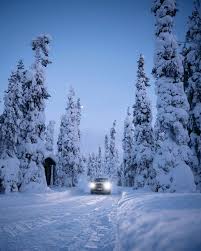Stamp: A winter scene near New Glasgow, Prince Edward Island (Canada 2006)
A winter scene near New Glasgow, Prince Edward Island (Canada 2006)
31 July (Canada ) within release Definitives 1989-2005: Canadian Flag goes into circulation Stamp A winter scene near New Glasgow, Prince Edward Island face value 51 Canadian cent
| Stamp A winter scene near New Glasgow, Prince Edward Island in catalogues | |
|---|---|
| Stamp Number: | Sn: CA 2135i |
Stamp is vertical format.
Single from Booklet pane (Sn CA 2139aii) (BK327Aa), by Lowe-Martin on TRC Paper. General Tagging along all edges of stamp.Also in the issue Definitives 1989-2005: Canadian Flag:
- Stamp - A dogsled in the St. Elias mountain range, Yukon face value 51;
- Stamp - A winter scene near New Glasgow, Prince Edward Island face value 51;
- Booklet - Flag Booklet 2006 face value 10*51;
- Booklet Pane - Flag Booklet 2006 face value 10*51;
- Se-tenant - Flag over New Glasgow, PEI, N.B, Manitoba, Alberta, and Yuko face value 5*51;
- Stamp - Southwest bastion, Lower Fort Garry National Historic Site face value 51;
- Stamp - The Bridge at Bouctouche, New Brunswick face value 51;
- Stamp - Wind turbines at Picher Creek, Alberta face value 51;
Stamp A winter scene near New Glasgow, Prince Edward Island it reflects the thematic directions:
A flag is a piece of fabric (most often rectangular or quadrilateral) with a distinctive design that is used as a symbol, as a signaling device, or as decoration. The term flag is also used to refer to the graphic design employed, and flags have since evolved into a general tool for rudimentary signalling and identification, especially in environments where communication is similarly challenging (such as the maritime environment where semaphore is used). National flags are patriotic symbols with varied wide-ranging interpretations, often including strong military associations due to their original and ongoing military uses. Flags are also used in messaging, advertising, or for other decorative purposes. The study of flags is known as vexillology, from the Latin word vexillum, meaning flag or banner.
A house is a single-unit residential building. It may range in complexity from a rudimentary hut to a complex structure of wood, masonry, concrete or other material, outfitted with plumbing, electrical, and heating, ventilation, and air conditioning systems. Houses use a range of different roofing systems to keep precipitation such as rain from getting into the dwelling space. Houses generally have doors or locks to secure the dwelling space and protect its inhabitants and contents from burglars or other trespassers. Most conventional modern houses in Western cultures will contain one or more bedrooms and bathrooms, a kitchen or cooking area, and a living room. A house may have a separate dining room, or the eating area may be integrated into the kitchen or another room. Some large houses in North America have a recreation room. In traditional agriculture-oriented societies, domestic animals such as chickens or larger livestock (like cattle) may share part of the house with humans.
A landscape is the visible features of an area of land, its landforms and how they integrate with natural or man-made features. A landscape includes the physical elements of geophysically defined landforms such as (ice-capped) mountains, hills, water bodies such as rivers, lakes, ponds and the sea, living elements of land cover including indigenous vegetation, human elements including different forms of land use, buildings and structures, and transitory elements such as lighting and weather conditions. Combining both their physical origins and the cultural overlay of human presence, often created over millennia, landscapes reflect a living synthesis of people and place that is vital to local and national identity. The character of a landscape helps define the self-image of the people who inhabit it and a sense of place that differentiates one region from other regions. It is the dynamic backdrop to people’s lives. Landscape can be as varied as farmland, a landscape park, or wilderness. The earth has a vast range of landscapes, including the icy landscapes of polar regions, mountainous landscapes, vast arid desert landscapes, islands and coastal landscapes, densely forested or wooded landscapes including past boreal forests and tropical rainforests, and agricultural landscapes of temperate and tropical regions.
Snow comprises individual ice crystals that grow while suspended in the atmosphere—usually within clouds—and then fall, accumulating on the ground where they undergo further changes. It consists of frozen crystalline water throughout its life cycle, starting when, under suitable conditions, the ice crystals form in the atmosphere, increase to millimeter size, precipitate and accumulate on surfaces, then metamorphose in place, and ultimately melt, slide or sublimate away.




